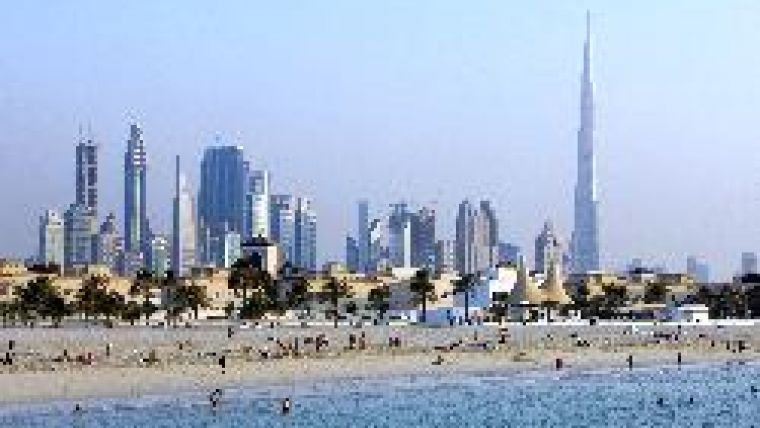World's Highest Tower
The 828-metre Burj Khalifa
The tallest building in the world was officially inaugurated by Sheikh Mohammed bin Rashid Al Maktoum of Dubai on 4th January. Formerly known as the Burj Dubai, the building was unveiled as the Burj Khalifa. Khalifa's tower, named after the president of the United Arab Emirates and Emir of Abu Dhabi, was declared to reach 828 metres high, considerably higher than the previous record holder, the Taipei 101 tower situated in the Taiwanese capital Taipei, which is a modest 508 metres, including its antennas. Besides the height record, the Dubai tower holds a number of remarkable others, including the world's highest mosque, on the 154th floor; the highest swimming-pool, on the 76th floor; and the world fastest elevators, travelling at 64km/h. Just a few days after the opening, a new record was added to the long list when two men jumped from 672 metres, descending at a speed of 220km/h before their parachutes opened. This was the world's highest base-jump and the parachutists took more than one and a half minutes to reach the ground.
Obviously, a surveyor equipped with a plummet and a folding ruler would encounter some problems aligning an upright construction like the Burj Khalifa. A high-rise building is a flexible construction, subject to several tilt effects; for instance, wind pressure, temperature differences between sun- and shady-side and all kinds of unilateral loads and vibrations during construction. But the construction process must progress in such a way that the building is aligned as planned, particularly vertically, when it returns to the theoretical non-tilted position.
On this subject, a fascinating paper, ‘Driving Burj Dubai Core Walls With an Advanced Data Fusion System', was presented during the Second FIG Symposium in Baden from 22nd to 24th May 2006; see . Data fusion is the keyword in this paper. Data gathered by total-station, GPS receiver and precision inclinometers placed outside and onsite within the construction area is matched to calculate the position of the tower in real time and any aberration in relation to its theoretical position.
The photograph shows the skyline of Dubai with Burj Khalifa on the right. The second image provides a comparison between the highest towers in the world.

Value staying current with geomatics?
Stay on the map with our expertly curated newsletters.
We provide educational insights, industry updates, and inspiring stories to help you learn, grow, and reach your full potential in your field. Don't miss out - subscribe today and ensure you're always informed, educated, and inspired.
Choose your newsletter(s)
























